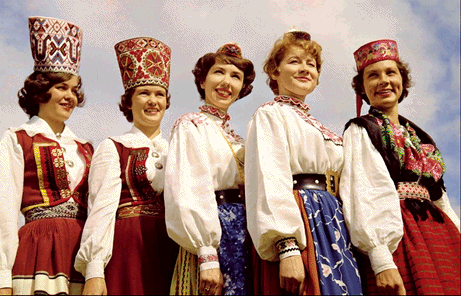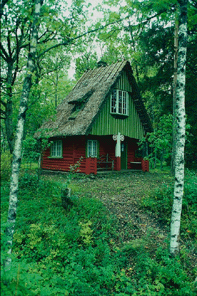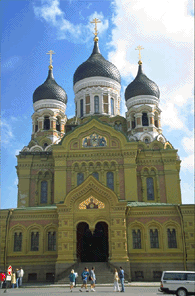
The Estonians are a people ethnically related to the Finns, and were first mentioned by historians in the first century A.D., but they probably settled the region long before. Although Estonia is not a large country—just under 17,500 square miles (45,000 square kilometers), it has several distinct regional folk traditions, as can be seen in these three different styles of traditional dress.

It is estimated that 30 percent of Estonians still live in the countryside, where a distinctive building style developed. Farmhouses were built with high, barn-like roofs and contained a floor for threshing wheat alongside the living quarters of the house. This thousand-year-old architectural tradition can be seen in other types of building as well, as in this summer home.

About 29 percent of Estonians are ethnic Russians, who began settling in the country hundreds of years ago. Alexander Nevsky Cathedral in Tallinn is a Russian Orthodox church, and although it is built in the centuries-old Russian style, it actually dates from the beginning of the twentieth century.
